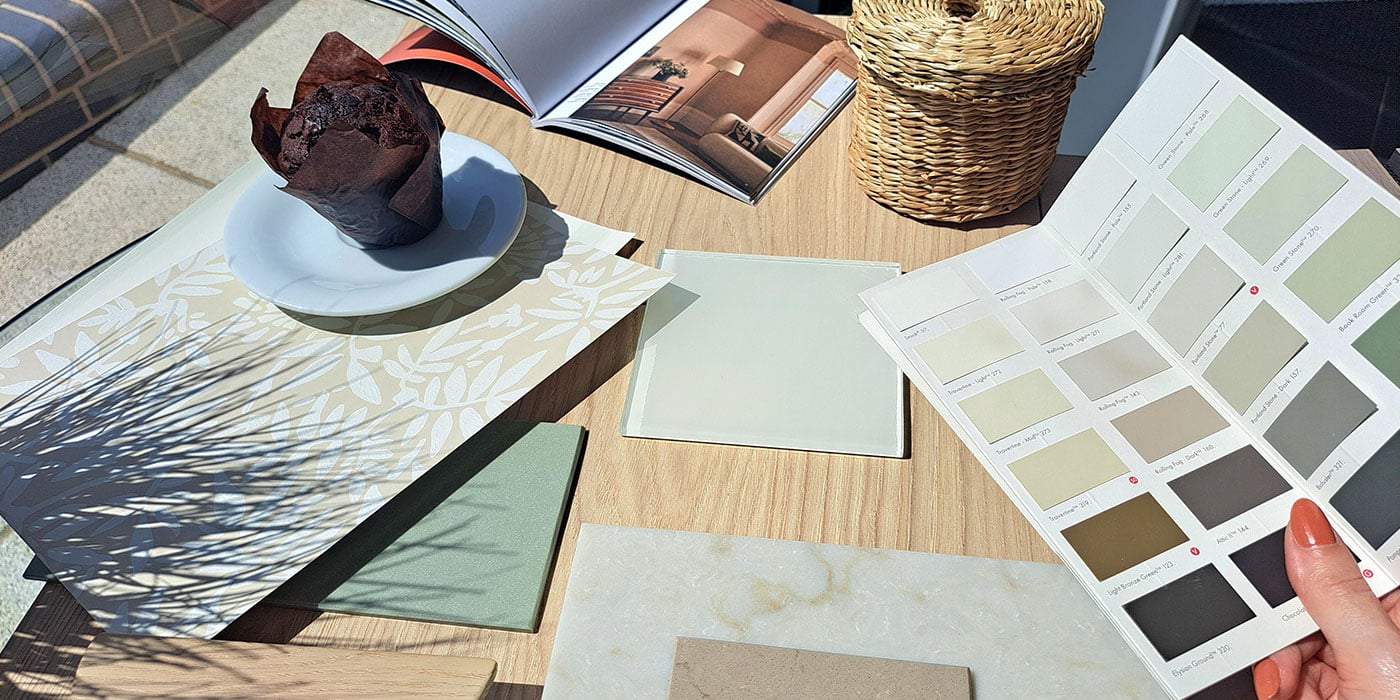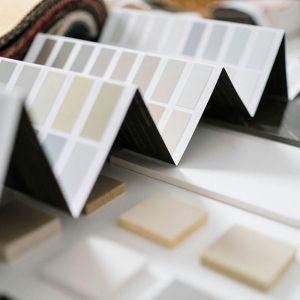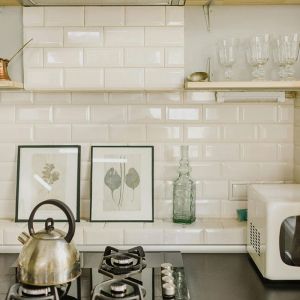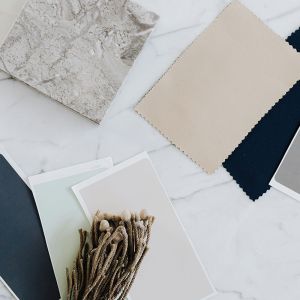Designing a kitchen isn’t just about cabinets and colours, it’s about telling a story. A space that makes sense visually, emotionally, and practically. The kind of story that feels deliberate, layered, and personal. And like any good story, it starts with a clear tone, some compelling characters (cabinetry, colours, textures), and the right setting.
So how do you build a cohesive kitchen story – one that’s more than just a collection of nice things in a room? You set the scene, layer it up, and let it evolve. Let’s dive in.
The Mood Comes First
I always say: before you pick a cabinet colour, pick a mood. Not everyone starts there, but trust me, it makes the rest of the journey smoother. Are you after light and airy? Warm and rustic? Sleek and minimal? Think less “navy cabinets” and more “how do I want this space to feel?”
Start with a moodboard. It can be digital or physical – whatever works for you. Swatches of paint, a photo of your dream table setting, a scrap of wallpaper, the marble worktop from your saved folder that you’ve swooned over for six months. Put it all together. Play. Edit. See what rises to the top. This becomes your visual anchor.
Colour Palettes: Pick a Lead, Then Accent
Once the mood’s in place, think about your colour palette like casting for a film. You’ve got your lead role (usually the cabinet finish or the floor), then your supporting acts (walls, splashback, handles, tiles, and accessories).
Accent colours are like plot twists – they can elevate the whole story. But they need to make sense. A warm terracotta accent in a room dominated by cool greys? That’s a bold move. It might work, but only if you back it up with other moments that tie it together. Repetition is what makes a space feel intentional.
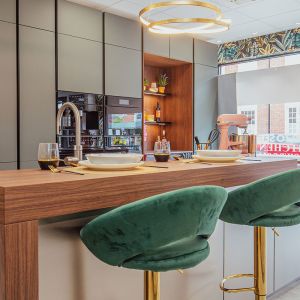
The Power of Contrast
Too much of the same thing, and your kitchen risks feeling flat. Think of it like reading a book where every sentence is the same length – it quickly becomes boring. Contrast keeps it interesting.
That could be a contrast in texture – a high-gloss tile against a soft matte wall. Or in colour – deep forest green base units paired with pale timber open shelving. Or finish – smooth quartz worktops next to fluted wooden panelling.
One of my favourite touches? Wallpaper in the kitchen (yes, I wrote a whole blog on it). Whether it’s behind a dresser or in a nook, wallpaper can add a layer of personality that breaks up the “kitchen-ness” and nods to the rest of your home.
Let the Walls Talk
People often fixate on cabinets and forget that the walls are a major character in your kitchen story. Wall colour can make cabinetry pop, or recede. Sheen level matters too – glossy tiles will bounce light, while matte painted walls will absorb it and soften the feel.
If you’re pairing tiles and paint, try contrasting finishes. A matte plaster-effect wall paint with a high-gloss zellige-style tile? That’s texture, movement, and visual interest all in one.
And if you’ve ever walked into a kitchen where everything was the exact same tone – walls, cabinets, tiles – you’ll know how important it is to create visual depth. Let the walls do some of the storytelling too.
Furniture and Accessories
A kitchen is rarely just for cooking. It’s often where we eat, host, plan, fold laundry, wrap presents, and enjoy a quiet moment at the end of the day. Your furniture and accessories should reflect that.
Consider things like:
- Table settings that change with the seasons: Swap out linen napkins, bring in rustic ceramics in autumn, or brighter, glazed pieces in spring.
- Art or ceramics on shelves: A kitchen with personality always has a few quirks. A vintage oil painting or a sculptural vase on an open shelf can bring that unexpected, curated feel.
- Chairs that speak to the cabinetry: Whether that’s matching tone or contrasting in a deliberate way, like warm wooden stools against soft pastel doors.
You don’t need to throw everything in at once. A good story unfolds in chapters. Let your space grow with you.
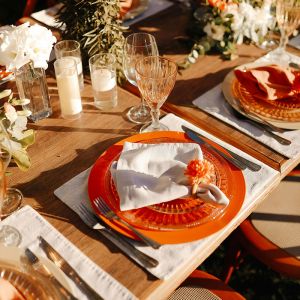
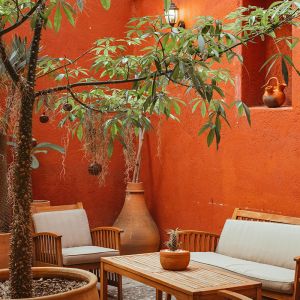
Consider the Seasons
A great kitchen works hard year-round, and some of the best kitchens feel slightly different as the seasons shift, without needing a full redesign.
In summer, it might be about letting light pour through sheer blinds and having a bowl of lemons on the counter. In winter, it’s candles, textured throws on bench seating, and maybe a darker-toned rug beneath the table.
Design with flexibility in mind. If your palette is cohesive and your foundation is strong, you can dial things up or down depending on the season, the occasion, or even your mood.
Cohesion Doesn’t Mean Uniformity
This is important: a cohesive kitchen doesn’t mean everything matches. It just means that everything makes sense together. There’s a difference.
Sometimes, that means repeating materials in a few key places. For example, a brushed brass handle on your cabinetry echoed in the pendant lighting above the island. Or your wall colour subtly picked up in the undertone of your worktop.
Other times, it’s more subtle – a theme of curves running through the room, or a palette that shifts softly from room to room, rather than stopping abruptly at the kitchen.
Telling Your Story, Not Just Following a Trend
At the end of the day, this is your kitchen. And while Pinterest boards and showroom tours are great for inspiration, the most successful kitchen designs are the ones that feel personal. Not because they’re loud or wildly unique, but because they feel considered.
That could mean designing around your favourite mug, your grandma’s recipe books, or the way the sunlight hits the room at 10am. Every detail can tie back to your story – if you give it space.
Story Ideas:
Terracotta plant pots + soft sage walls = a calm, earthy retreat
Sandy units + blush-toned walls = warmth with a gentle glow
Ink blue cabinets + crisp white tiles + brass accents = bold yet elegant
Pared-back neutrals + woven textures + timber tones = relaxed and natural
The Takeaway
A cohesive kitchen story is about more than a great cabinet colour or a stylish handle. It’s about layering elements – colour, texture, contrast, and function – in a way that feels intuitive and thoughtful. It’s the kind of design that looks effortless because it’s anything but.
So, whether you’re just starting your design journey or you’re in the thick of choosing splashback grout, take a step back and ask: what story am I telling?
And does everything in this room belong in that story?
If the answer’s yes, you’re on the right track.
